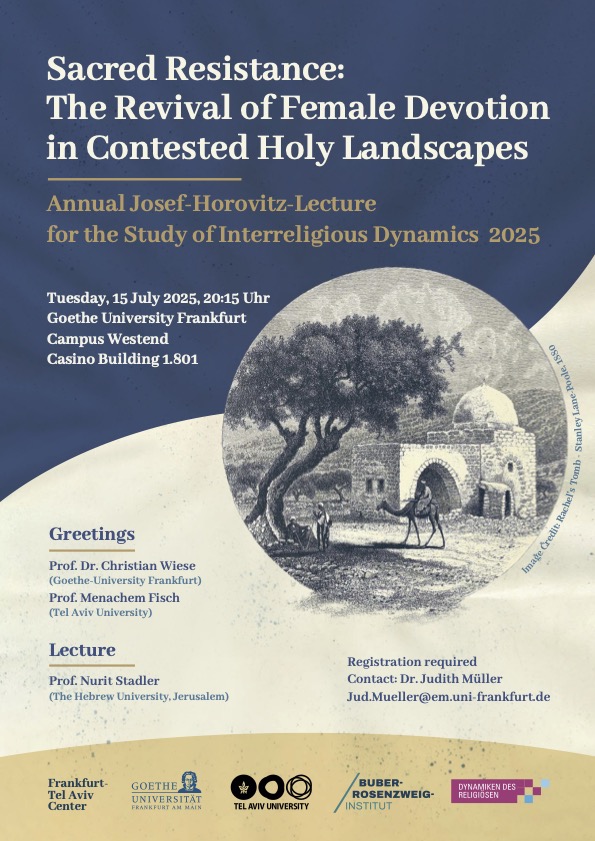15. Juli @ 20:15 – 21:45
ANNUAL JOSEF-HOROVITZ-LECTURE FOR THE STUDY OF INTERRELIGIOUS DYNAMICS 2025
Nurit Stadler is a Professor in the Department of Sociology and Anthropology at the Hebrew University of Jerusalem. Her primary research focuses on the sociology and anthropology of religion, with an emphasis on religious resurgence, fundamentalism, and the complex relationships between scriptures, cosmology, and politics within diverse religious communities in urban settings. She has also explored the anthropology of pilgrimage, sacred places, rituals, tomb worship, and iconography in Greek Orthodox, Roman Catholic, Orthodox Jewish, and Sunni Muslim traditions across the sacred landscapes of the Holy Land. She is the recipient of the prestigious Humboldt Research Prize (2025) and has held senior research fellowships at Leipzig University, the Freie Universität Berlin, and University of Zurich.: Yeshiva Fundamentalism: Piety, Gender, and Resistance in the Ultra-Orthodox World (2008), which examines transformations in Ultra-Orthodox communities and the Yeshiva world in relation to modernity, urbanism and nationalism. A Well-Worn Tallis for a New Ceremony (2012), which explores the intersections of religion and politics in Israel/Palestine and Voices of the Ritual (2020), which investigates the resurgence and manifestations of rituals at female saint shrines in the Holy Land.
In the contested territories of the Holy Land, devotions at sacred spaces are increasing, and serve as dynamic platforms to articulate religious, political, and spatial claims. In this lecture, Nurit Stadler examines how ritual practices, particularly those centered on female saints and “womb-tomb” structures, are re-emerging as modes of resistance and spatial assertion amid ongoing geopolitical instability, religious exclusion, and the militarization of the landscape. Drawing on long-term ethnographic research conducted at sacred shrines throughout the Holy Land, she explores how contemporary rituals devoted to female saints constitute embodied responses to spatial conflict and analyzes the cultural and political meanings they generate. In her research, Nurit Stadler employed a multi-site ethnographic methodology combining participant observation with spatial and material analysis, that paid particular attention to bodily practices, ritual objects, and shrine architecture. The findings reveal four interrelated dynamics in these sites: (1) body-based mimetic rituals (not textual rituals) that replicate cycles of birth, death, and rebirth, (2) the prominence of female materiality as a medium of fertility, memory, and sanctity, (3) ritualized land-claiming enacted through bodily emplacement, ecological symbols and territoriality, and (4) landscapes of resistance, where the sacred space becomes a site of subversive spatial inscription. Drawing on theories of ritual mimesis, material culture, and landscape, she argues that ritual performances at female sacred sites operate as counter-publics through which marginalized groups, especially women and ethno-religious minorities, reinscribe belonging onto contested terrain. These “voices of the ritual” constitute acts of territorial inscription that challenge dominant narratives of sovereignty and national belonging by generating an alternative moral cartography grounded in embodied devotion, historical memory, and sacred femininity.
For the required registration please contact Dr. Judith Müller (Jud.Mueller@em.uni-frankfurt.de).
Frankfurt Tel Aviv Center
Tel Aviv University
Buber-Rosenzweig-Institut für jüdische Geistes- und Kulturwissenschaft der Moderne und Gegenwart
Kramberger@em.uni-frankfurt.de

